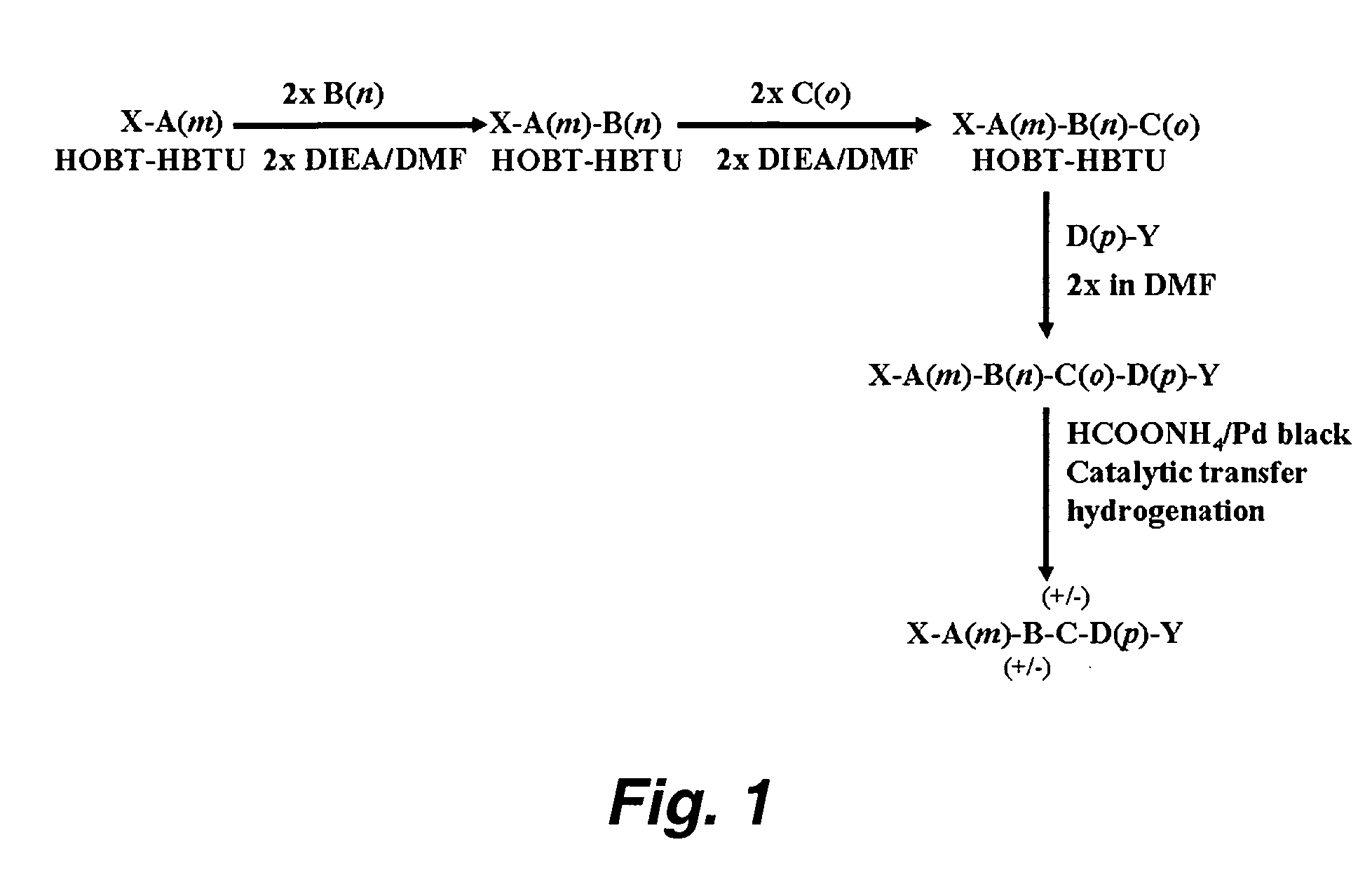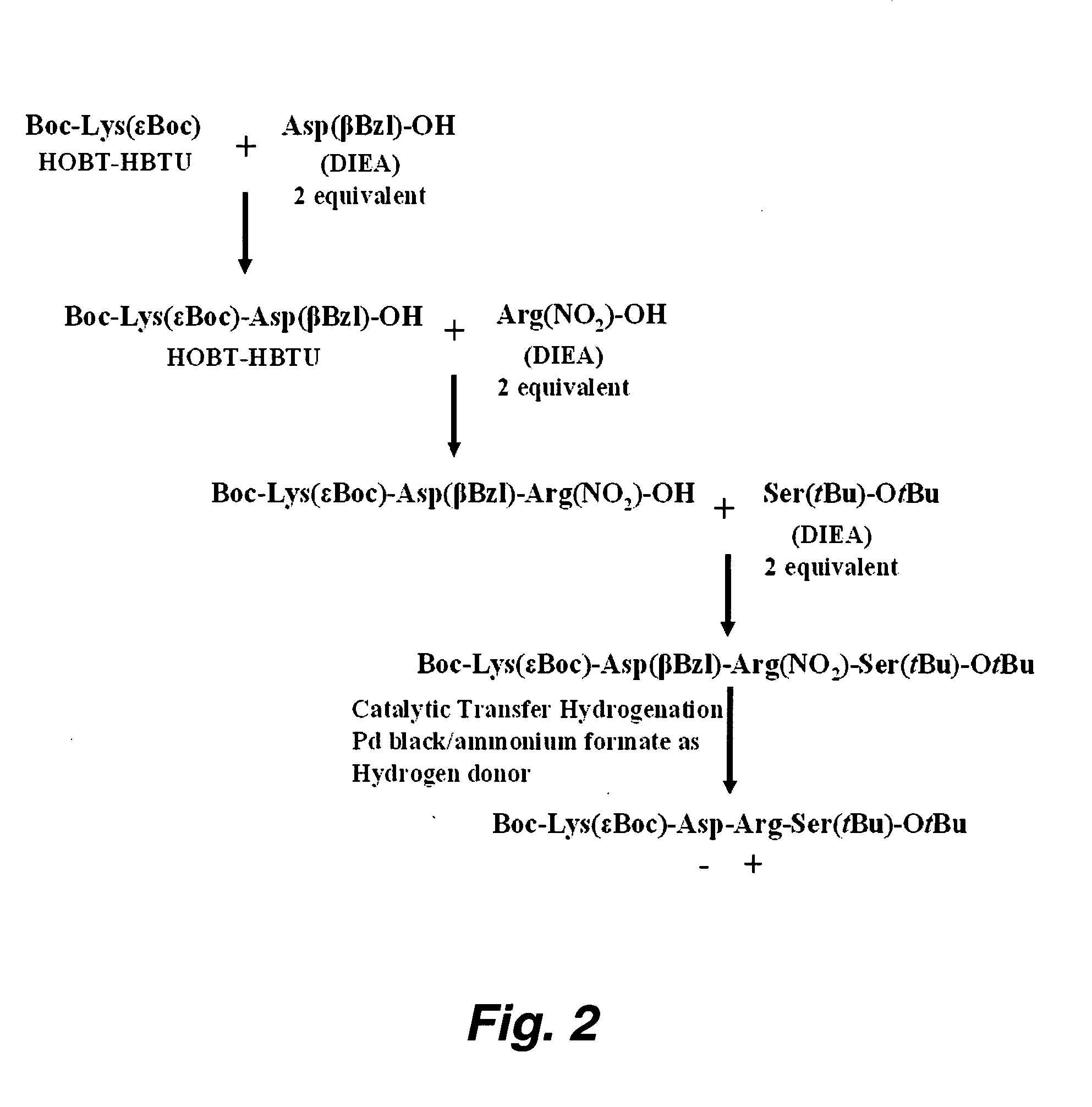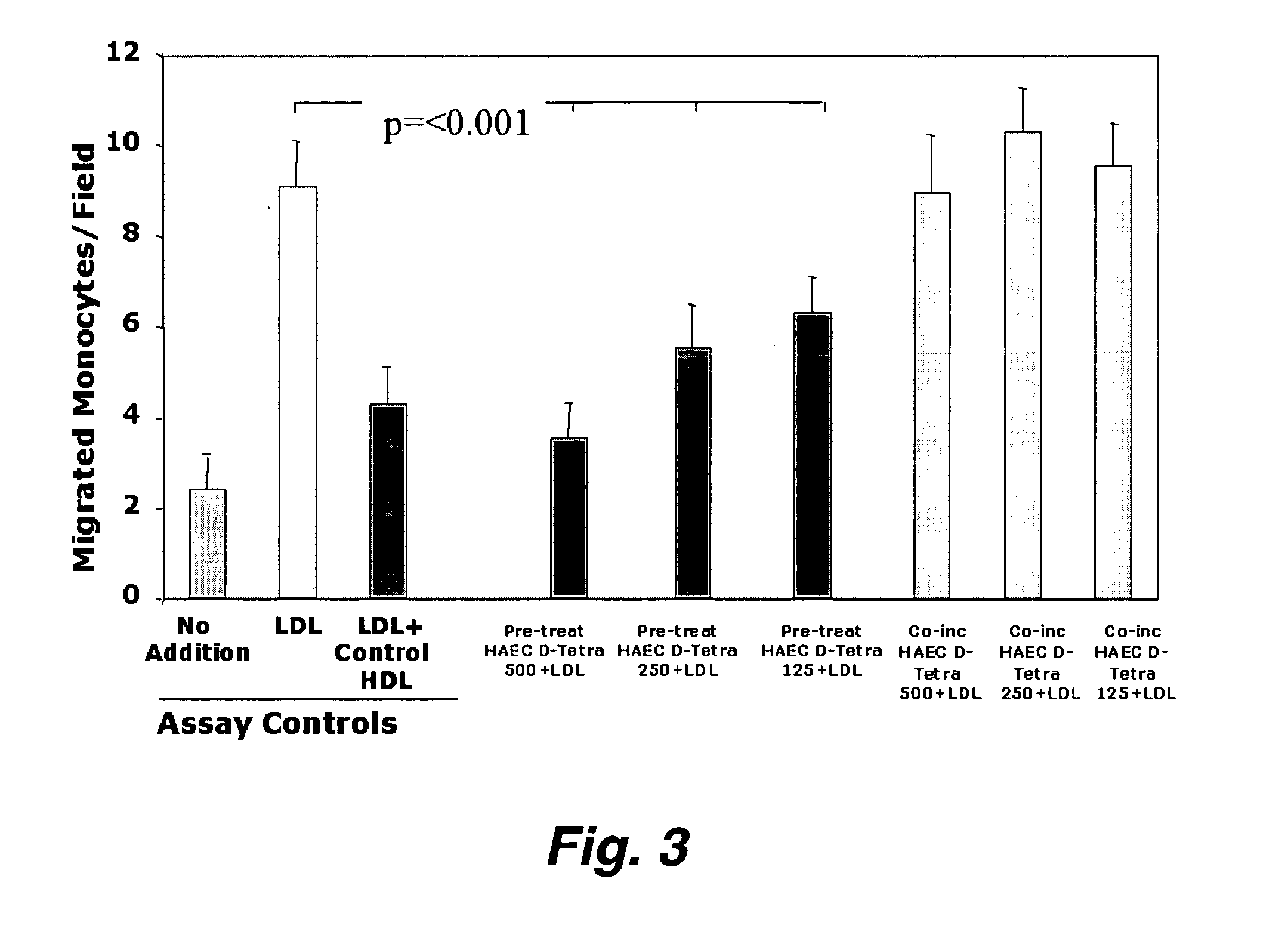Orally administered small peptides synergize statin activity
a statin activity and small peptide technology, applied in the field of atherosclerosis, can solve the problems of leading morbidity and mortality in cardiac disease, and achieve the effects of reducing mortality, reducing side effects, and reducing side effects
- Summary
- Abstract
- Description
- Claims
- Application Information
AI Technical Summary
Benefits of technology
Problems solved by technology
Method used
Image
Examples
example 1
Evaluation of Small Peptides to Mediate Symptoms of Atherosclerosis and Other Inflammatory Pathologies.
[0331] The apo A-I mimetic peptides described herein (see, e.g., Table 1) exhibit antiatherogenic properties similar to apo A-I in that they remove the “seeding molecules” (e.g., oxidized phospholipids such as Ox-PAPC, POVPC, PGPC, and PEIPC, etc.) necessary for artery wall cells to oxidized IDL and are similar to apo A-I in that they ameliorated atherosclerosis in mouse models.
[0332] The apo A-I mimetic peptides (e.g., D-4F, SEQ ID NO:8), differ from apo A-I in that they are also active in a co-incubation similar to apo J (see, e.g., U.S. Ser. No. 10 / 120,508 and PCT / US03 / 09988). These peptides generally do not have substantial sequence homology to apo A-I, but have homology in their helical structure and in their ability to bind lipids.
[0333] The smaller peptides described herein (see, e.g., Tables 4-7 herein) are similar to native apoA-I in that they prevent LDL oxidation and ...
example 2
Peptides Synergize Statin Activity
[0348]FIGS. 20 and 21 show the very dramatic synergy between a statin (pravastatin) and D-4F in ameliorating atherosclerosis in apoE null mice. Mice are known to be resistant to statins. The mice that received pravastatin in their drinking water at 20 μg / ml consumed a dose of pravastatin equal to 175 mg per day for a 70 Kg human and the mice that received pravastatin in their drinking water at 50 μg / ml consumed a dose of pravastatin equal to 437.5 mg per day for a 70 Kg human. As shown in FIGS. 20 and 21, these very high doses of pravastatin were not effective in ameliorating atherosclerotic lesions in apoE null mice. As shown in FIGS. 20 and 21, adding D-4F alone to the drinking water of the apoE null mice at concentrations of 2 μg / ml or 5 μg / ml did not reduce atherosclerotic lesions. These doses of D-4F would be equivalent to doses of 17.5 mg per day, and 43.75 mg per day, respectively, for a 70 Kg human. Remarkably, as shown in FIGS. 20 and 21, ...
example 3
Physical Properties of Novel Small Organic Molecules (Molecular Weight<900 Daltons) that Predict Ability to Render HDL More Anti-Inflammatory and Mitigate Atherosclerosis in a Mammal
[0350] It was a surprising finding of this invention that a number of physical properties predict the ability of the small peptides of this invention to render HDL more anti-inflammatory and to mitigate atherosclerosis and / or other pathologies characterized by an inflammatory response in a mammal. The physical properties include high solubility in ethyl acetate (e.g., greater than about 4 mg / mL), and solubility in aqueous buffer at pH 7.0. Upon contacting phospholipids such as 1,2-Dimyristoyl-sn-glycero-3-phosphocholine (DMPC), in an aqueous environment, the particularly effective small peptides form particles with a diameter of approximately 7.5 nm (±0.1 nm), and / or form stacked bilayers with a bilayer dimension on the order of 3.4 to 4.1 nm with spacing between the bilayers in the stack of approximate...
PUM
| Property | Measurement | Unit |
|---|---|---|
| Mass | aaaaa | aaaaa |
| Diameter | aaaaa | aaaaa |
| Diameter | aaaaa | aaaaa |
Abstract
Description
Claims
Application Information
 Login to View More
Login to View More - R&D
- Intellectual Property
- Life Sciences
- Materials
- Tech Scout
- Unparalleled Data Quality
- Higher Quality Content
- 60% Fewer Hallucinations
Browse by: Latest US Patents, China's latest patents, Technical Efficacy Thesaurus, Application Domain, Technology Topic, Popular Technical Reports.
© 2025 PatSnap. All rights reserved.Legal|Privacy policy|Modern Slavery Act Transparency Statement|Sitemap|About US| Contact US: help@patsnap.com



